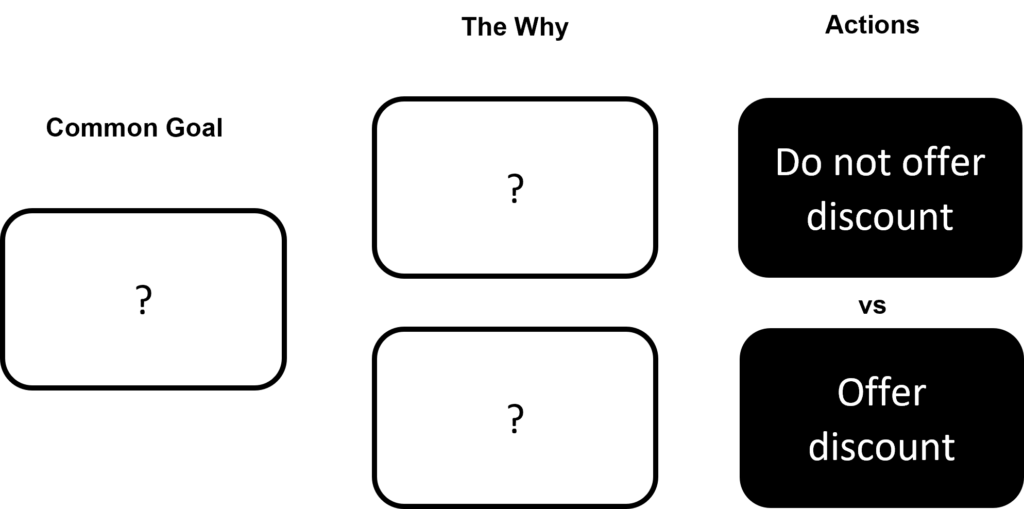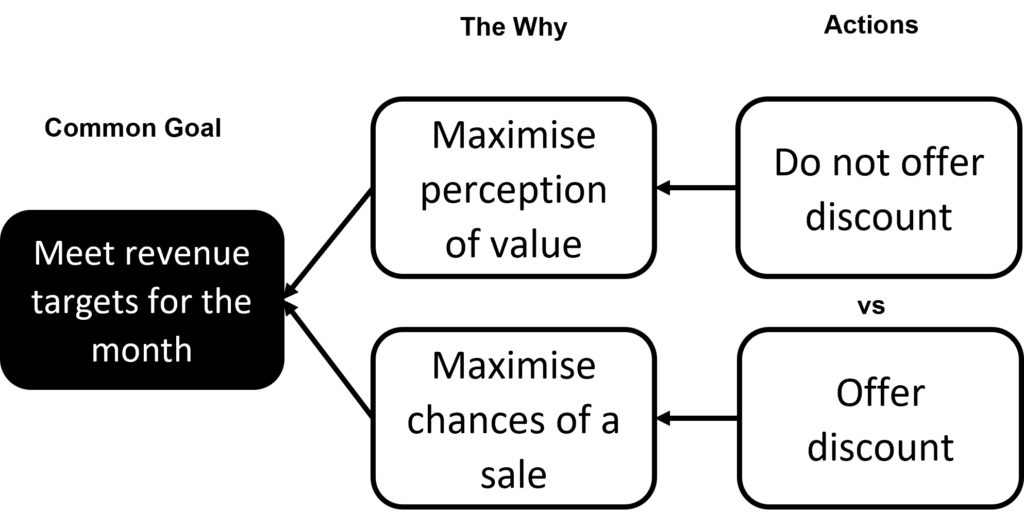This is an article by our own Mirta Fagundes dos Santos
Many of the Conflict Resolution methods out there do not resolve conflicts. They teach, in a nutshell, communication and compromise.
This is insufficient to resolve a conflict. All it does is make one side ‘give in’ and resign themselves to the fact they won’t get their way this time. The conflict itself does not get resolved, it just gets swept under the carpet until next time. (If you’re married, you’ll know exactly what I am talking about)
What is conflict?
Let’s start with defining conflict. For the purpose of this article, let’s say a conflict is a persistent difference of opinion. When occurring in a workplace, it may hinder decision making, delay action and cost us either an opportunity, or worse; put us at risk.
Unless we are a sole proprietor and make all the business decisions in agreement with our clever selves, we are likely to work alongside people we disagree with some of the time.
Just because we do not agree with someone’s opinion does not mean that we will be in conflict with them.
There are four ways a disagreement can play out:
- David vs Goliath: If they are our superior, their opinion trumps ours, and that is that. The disagreement does not progress into a conflict.
- David vs David: If they are our equal, but their opinion in no way impacts us, we may choose to ignore the disagreement. No conflict, too easy!
- David vs Karen: If they are our equal and their opinion in no way impacts us, but we are a Karen, we may choose to take the fight on. Depending on many factors, including if there is someone filming the interaction – we’re best to walk away. #nomoreKarensonYouTube
- Goliath vs Godzilla: If we are both in positions of power, where we need to make a decision, and we butt heads on which direction to go in, well… bring it on! It’s conflict time!
When to resolve a conflict?
Some conflicts are worth resolving. Not just to keep the harmony in the workplace, but of the enormous benefit to the organization. A resolved conflict results in an almost bulletproof solution to the problem at the heart of the dispute.
Conflict is not inherently bad, though it certainly has that connotation. I personally welcome differences of opinion (unless of course someone is disagreeing with me). Disagreement that leads to a passionate debate signifies to me that my people care; that they think, and that they won’t settle for mediocracy. They want what is best for the company, or themselves, but hopefully it’s that first one.
How to resolve a conflict?
As mentioned, most conflict resolution methods do nothing more than prepare us to ‘handle ourselves’ when disagreements arise. And no matter the ‘method’ the components are almost always identical, and a combination of:
- Active listening – there are two sides to every story, blah blah blah
- Open-mindedness – try to understand the other person’s point of view and all that jazz
- Keeping one’s composure – emotions may run high, and you should try and be objective in your discussions. Well say that to Sally who keeps calling me “teacher’s pet” every time the boss picks my idea over hers.
- Cooperation – Oh this one is my favourite. This one is like magic. Just cooperate and you will find a resolution!
So, how can a conflict be resolved?
Well, I thought you’d never ask!
3 (conceptually) easy steps that, with practice, can become second nature:
- Get clear on the “why” of the actions you are arguing about.
- Ensure you share a common goal.
- Try to find a solution that will satisfy both ‘Whys.’
Let’s work through a simple yet all too common example. Your salesperson wants to offer a discount to land a sale. If you are like me and are allergic to giving discounts, you will be pushing for the salesperson to close the deal without resorting to discounting.

First, let’s get clear on why we want to take the opposing actions.
I do not want to offer a discount because, all too many times, I have seen the perception of the value of the product/service decrease to a point where people do not want to pay the full price.
For example, an online printer sends me promo discount codes to get photo albums printed. 50% off was the highest discount they ever offered me. So, now when I want a photo album printed and see the full price on their website, I think I am overpaying. I feel like it is a rip-off, and I wait for the discount offer to come my way before I feel good about placing the order.
My salesperson has had a different personal experience. They think that it is way easier to make a sale if you offer a discount. From their point of view, a discount is just the right tactic to push that undecided buyer in the right direction and get them to buy.

Now that we are clear on the “whys,” we must agree on the common goal. If we don’t have a common goal, solving the conflict will not be worth our time or effort. The goal is what unites us against the conflict. It gives us common ground and a reason to solve the disagreement.
In terms of the goals as written, a common goal could be as specific or broad as we like, as long as the two whys are necessary conditions for it to be true. The way we check for this is by reading the Goal and the whys out in the following manner:
In order to [common goal] we must [why #1] and [why #2]. If it makes sense, move on to the last step, finding a solution that will satisfy both ‘Whys.’

Understandably, this is the hardest part. But once you start focusing on the “whys” and stop arguing about the actions, you can see the wood for the trees. There is no more disagreement between do we or do we not offer a discount. The new task at hand is how do we BOTH maximise the perception of value AND maximise the chances of a sale. This gives us many more options than just the two actions which started the conflict.
We could, for example, offer something that will be of value to the prospect to make the sale sweeter. This way, we do not discount, and the prospect has retained the perception of our product/service being of value. For example, we could offer a reduced lead time (if your internal lead time was shorter than advertised).
OR we could offer guarantees that only come with fully priced projects, like the ones we used to have on the back of our business cards (back in the day, when I was a young lass and business cards were a thing). I swear when people saw them, they used to say: “You can’t offer that!” … well, we sure did. “But of course, we could instead offer you a discount, and take the guarantees away?” They seldom went for the discount in these cases, but when they did, they knew that the discount was a quid-pro-quo and not just a salesperson last-ditch desperate attempt to close them. And the value of our service stayed intact!
If for one reason or another there is pressure to choose between the two actions, then there is a much more lengthy and prescriptive process to follow in order to resolve the conflict. And by ‘resolve’ I mean truly resolve, so that both parties are satisfied – not just compromise or sweep the issue under the carpet.
But that is a story for another article.
Mirta is a Director of ViAGO Limited, a behavioral science enthusiast, and a mum to three boisterous boys.
